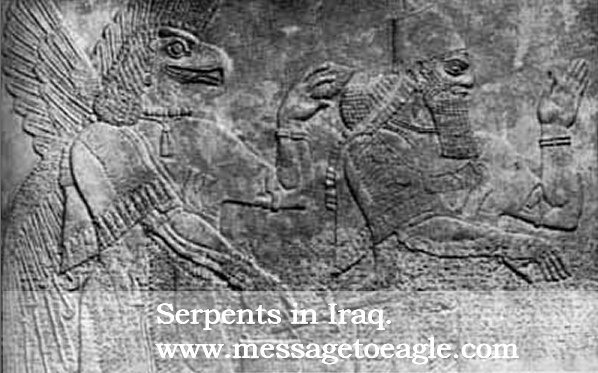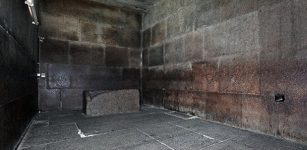Stone Figurines And Carvings Of The Anunnaki
MessageToEagle.com – This time our quest for traces of prehistoric alien visitations takes us to Iraq where we come across many stone figurines and carvings of the Anunnaki – “those who from heaven to earth came”.
The National Museum of Iraq in Baghdad contains remarkable artifacts that offer proof of these visits. Some of these artifacts are more than 10,000 years old. The museum’s huge collection tells the epic story of human civilization, from the earliest settlements to the rise and fall of vast empires.
This is also the place where we encounter a number of stone figurines and carvings depicting otherworldly beings.
Below you can see a strange looking figure with very big round eyes, odd arms, no lips and a weird elongated body. It has been dated to 4000 – 6,000 BC.
The Sumerians were one of the earliest urban societies to emerge in the world, in Southern Mesopotamia more than 5000 years ago.
History tells us many interesting facts and stories about the Sumerians and even today archaeologists and historians still do not have a complete picture that could tell everything about the people that once inhabited the region of the Tigris and Euphrates rivers.
In 1976 author and researcher Zecharia Sitchin (1920-201) published his personal translations of the Sumerian texts in a series of books called “The Earth Chronicles”.
According to Sitchin the clay tablets describe an alien race known as the Anunnaki who came to Earth to mine gold. Anunnaki is a collective name for the gods of Heaven and Earth of which the “triad” of Gods belonged to.
The most important Gods of the Mesopotamian pantheon were Anu, Enlil and Enki,
Were the Anunnaki reptilian-like humanoids?
In our article ancient reptilian-like humanoids hold secrets of mankind’s origin we described these enigmatic figurines, dated to the so-called Ubaid period in Ur (6000 to 4000 BC) were unearthed by Sir Charles Leonard Woolley (17 April 1880 – 20 February 1960), a British archaeologist best known for his excavations in the 1920s and 1930s in Mesopotamia.
The figurines depict snake- or reptilian-headed humanoids that were found in several Ubaid cemeteries in the vicinity of Ur, southern Iraq.
Other interesting figures we came across depict odd-looking beings with large eyes.
As we also mentioned in our article the story of the Serpent People and their guidance, these beings were known from time immemorial, as the Serpent People, or People of the Serpent.
Collectively, they are all known as the Serpents of Wisdom and their great contribution to the global development of our planet can never be erased.
In 1976 author and researcher Zecharia Sitchin (1920-201) published his personal translations of the Sumerian texts in a series of books.
The serpents were present in various parts of the globe – as the “Nagas” (“snakes”) in India, Amaru of South America, the Quetzalcoatls (“Plumed Serpents”) in Mexico, the Djedhi (“snakes”) in Egypt, the Lung (“dragons”) in China or perhaps the Adders (“snakes”) in Britain
The ancient Sumerian clay tablets play an important role when we try to unravel humanity’s mysterious past and origin.
The tablets were written some 5-6000 years ago, by the end of the era of the Anunnaki’s 450,000 years reign, or more, on Earth. Much of the information the Sumerians relied on, beside what the gods told them face to face was the teachings that came out from Ea’s secret society, The Brotherhood of the Snake (or The Brotherhood of the Serpent).
This first secret society on Earth is the father of all secret societies that followed.
© MessageToEagle.com














